The TRS-80 was a good computer in it's day. It had BASIC in the ROM which meant that it booted VERY quickly.
It also had one big drawback - the power switch would sometimes work itself into the Off position, usually just before a CSAVE operation.
I decided that I could build a better one, and be able to fix it myself if I mada a mistake while interfacing it. At the time, one of the bigger computer magazines stated that "It is impractical to build a computer from scratch". Sounds like a challenge to me. I studied the TRS-80, and decided that I could seriously reduce the chip count by using the newer octal bus driver chips, and static RAM chips. The next big obstacle was the character generator chip, so I designed my own with a 2716 EPROM. All I had to do was figure out how the bit patterns were stored, and write out the HEX codes to burn into the chip. The first one almost worked - I omitted the top bar from the letter "T". No problem - I had CSAVE'd the data. Just change one line and burn it again.
It was a good learning experience. If it worked the first time, I wouldn't have learned much.
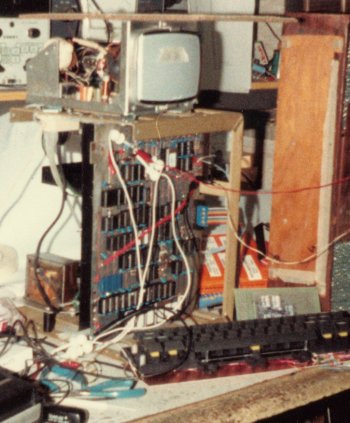
I had a MIDI interace, a custom multi-port musical keyboard interface, several EPROM burners, speech synthesizer, plotter, guitar synthesizer, EPROM emulator, and EPROM loader.

This version was built in a roll-around cart. On the left is the cassette recorder (yes - they did work much better than some people claimed - you just need to use GOOD tapes), a 4 inch video monitor, and the TRS-80 Quick Printer.
I used this computer one Halloween to run the Dancing Demon. If you haven't seen it, it displays a little dancing figure which can pe programmed to do a variety of dance steps. I set it up to run at the same tempo as the Ghostbusters theme which I piped out onto the porch, and ran the video output through a 14 inch amber monitor. The kids went nuts over it, mostly because IBM graphics hadn't been seen by the general public. It was also long before Elvira's time, but that's a different story.
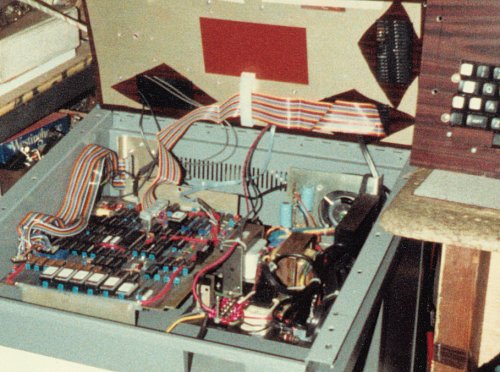
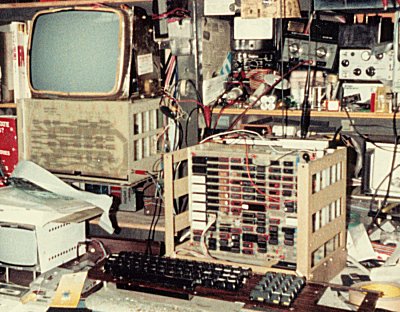
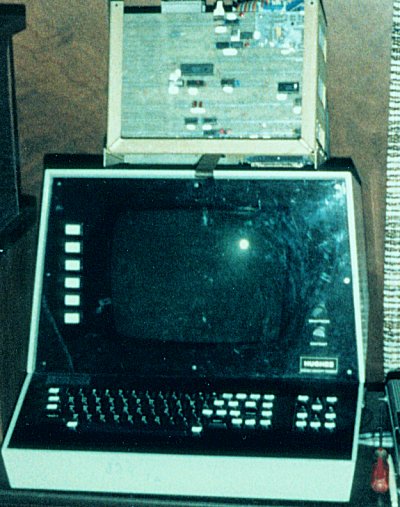
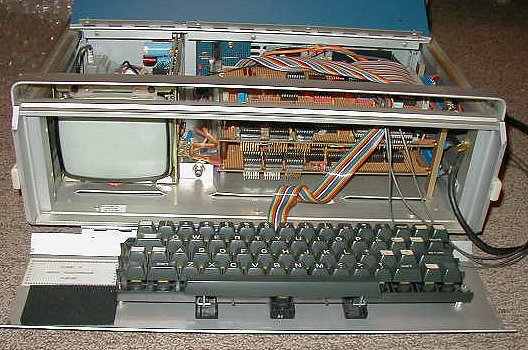
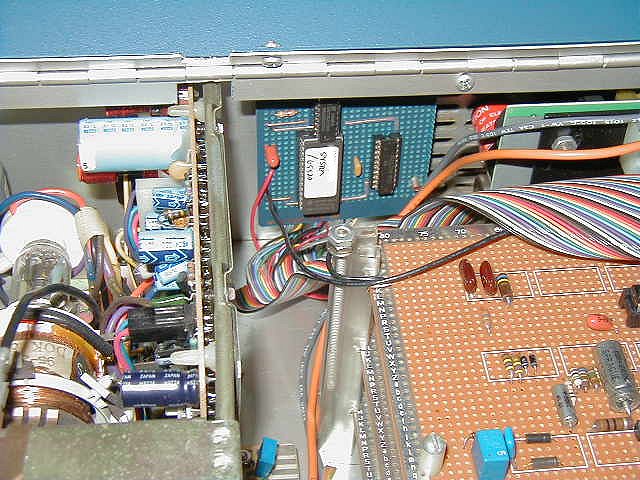
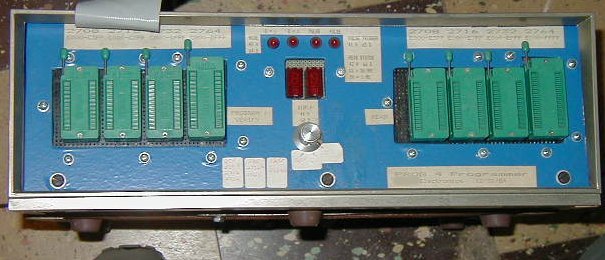
The fifth programmer plugs into a parallel port board on the XT/AT computer.